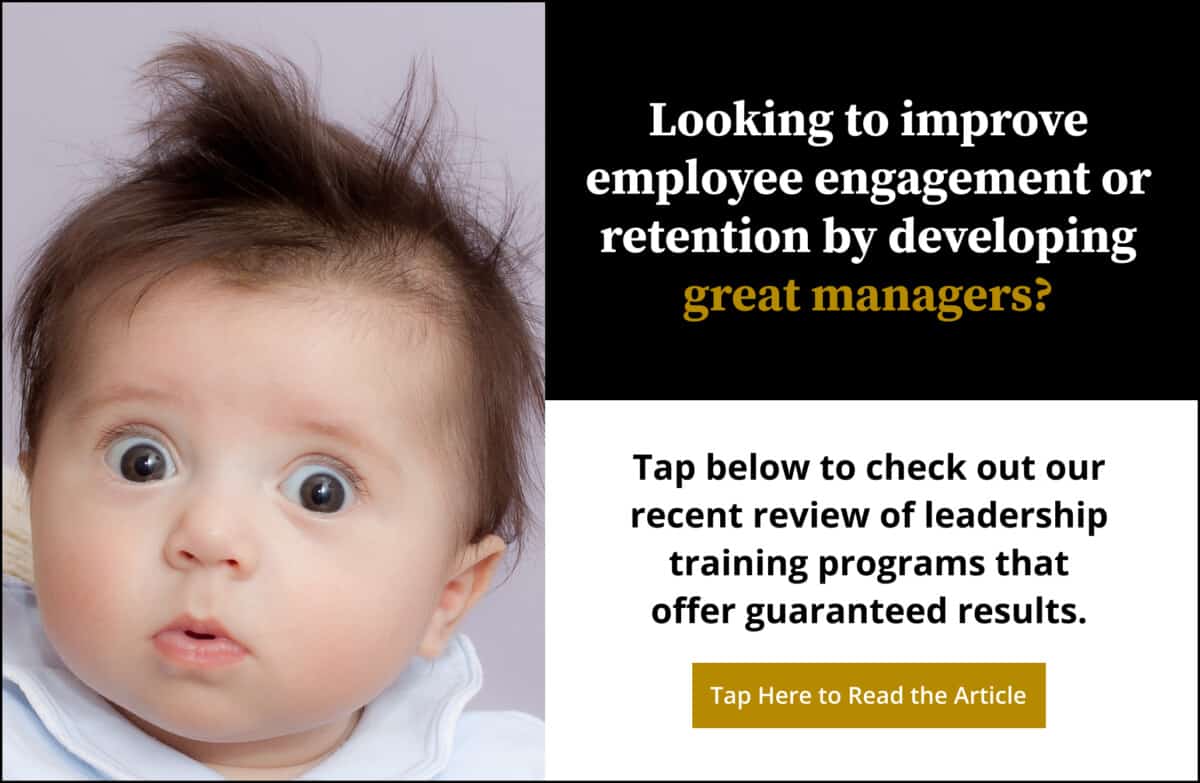Share:

Many leaders are aware of how important culture is for the success of their business, as discussed in this article.
For leaders who are working to build organizations that endure, and achieve long-term success, it is important to consider the degree to which sustainability is a part of the culture.
A sustainable business culture is one that prioritizes long-term impact and results over short-term gain, particularly in terms of the effect the business has on the well-being of employees, the community, and the planet, as well as on long-term financial results.
In this article, we will explain what a sustainable business culture looks like, its origins, and the three components of sustainability: employee, environmental, and economical.
A culture of sustainability, or sustainable business culture, is one in which all team members, from senior leaders to frontline people, are mindful of the effects the business has on its employees, the environment, and the long-term financial success of the business.
This type of culture links its own prosperity to the well-being of the community it serves.
Business leaders who consider long-term sustainability often think in terms of the financial success needed for their business to flourish. However, many fail to consider how the longevity of their business is tied to the people and places it affects.
A business that prioritizes employee sustainability looks at the needs of its employees, whether within the office environment or their personal lives. When employee needs are met, employers will see increased engagement, productivity, and loyalty to the company.
A sustainable environmental culture examines the impact a business has on the environment. If the business creates harmful byproducts, or uses up valuable resources, it can adopt a harm-reduction strategy, or change to more environmentally healthy technology.
Incorporating the needs of its people and places into the long-term success of the business’s prosperity can actually increase profit, as well as the business’s standing in the community, all of which increases the business’s chances for long-term viability, as explored in this article.
Organizations that do this well have sustainability ingrained in every part of their culture, beginning with a mission or values statement with sustainability as its focus.
Sustaining those values takes commitment from business leaders to practice what they preach. If a company claims to value sustainability but then fails to implement practices that reflect those values, employees may lose faith in their employer’s integrity, and disengage.
Hiring people who understand and care about sustainability culture is another way businesses can grow and sustain a culture of sustainability, as is educating an existing workforce about any positive changes the company wishes to make toward becoming more sustainable.
A business that consistently makes decisions with sustainability as a filter, as reflective of their core values, is one that operates with integrity and takes action to put sustainability principles into practice.


The History of Sustainable Business Culture
Created by John Elkington in 1994, the goal of business sustainability was to redefine how businesses interact with the community and how capitalism could change its practices for the betterment of society.
Often referred to as the “three pillars” of People, Places, and Prosperity, Elkington’s pillars of sustainability explored not only what was lacking in business culture but how the three pillars can work together and improve one another.
When businesses focus on profit alone, they can ignore or justify how their practices affect the environment and the people who work for them. Profit-driven business models had existed for years, often gutting resources, poisoning the environment, or leaving employees burned out.
Sustainable business practices were created to minimize these negative impacts, in the hopes of creating a better world and giving people purposeful, positive work.
What Is Employee Sustainability?
Employee sustainability prioritizes the needs of employees. In this kind of culture, leadership uses compassion, trust, and honesty to create a positive work environment. Within such a positive culture, employees are encouraged to support and validate one another, as well.
The well-being of employees is also prioritized when companies adopt safety protocols or offer healthy options for food, activity, and mental health. Providing livable wages and access to healthcare are important ways businesses can sustain their employees.
Business leaders who create an environment of shared goals and values within the company culture can see an increase in engagement, productivity, loyalty, and retention of their employees.
This results in workers who feel valued, are motivated to improve performance, and have greater loyalty to the company. Employee satisfaction, productivity, and retention can not only increase profit but also the company’s standing in the community.
What Is Environmental Sustainability?
Businesses can have profound impacts on the environment. Regardless of what they create or consume, the by-products of business operations can wind up in our air, water, landfills, or our bodies.
Harm reduction is one way businesses have sought to minimize negative impacts on the environment. Adopting new technologies which use clean energy, waste reduction, or more efficient production methods is even better, and more companies are seeing the benefits.
While changing methods and adopting new technologies can require up-front investments, the long-term benefits to the environment help the business sustain itself without using up resources it needs or wasting money on unnecessary or outdated methods.
Environmental sustainability benefits employees who live in this environment, who can also take pride in working for a company that prioritizes environmental health and holds itself accountable for the impact it has.
A business that works toward accountability and improving its environmental impact will also improve its standing in the community and in society. A positive “do good” reputation will attract better talent, draw more clients, and increase the company’s long-term financial success.
What Is Economic Sustainability?
When most business leaders think of economic sustainability, they may think only in terms of profit. Economic sustainability considers how the support of the people and the environment can increase the long-term sustainability of the company and its prosperity.
Meeting the needs of employees helps the economic sustainability of a company by ensuring workers will not leave in search of better working conditions, pay, or opportunities. Employees who feel recognized and valued engage more, increasing productivity, creativity, and innovation.
A business that values the environment will also benefit from a “do good” reputation and from long-term cost saving measures, like cleaner technology, waste reduction, and greater efficiency.
Renewable energy sources not only reduce long-term cost, they prevent finite resources from being depleted. Dependency on depleting resources can harm a company’s long-term success, as costs go up, and competitors switch to newer technologies.
Businesses that cling to older, outdated, and potentially harmful practices driven by profit alone may fall behind those that offer the kind of clean, responsible practices that consumers and clients increasingly seek out.
Just as an employee who feels valued will speak well of the company, society will value environmental measures, spreading praise on social media or news outlets. A business known as a responsible, caring place to work will attract better talent and clientele, increasing profit.
When a business adopts a sustainable culture that values employees and the environment, they help their own economic sustainability for long-term success, rather than only considering short-term gains.


Why Businesses Often Fail to Create A True Culture of Sustainability
When a business puts pressure on the “bottom line” of short-term profitability, it ignores the potential long-term benefits of investing in its true future: the people and places it aims to serve.
The three pillars or “triple bottom line” coined by Elkington intended to change that, encouraging companies to re-examine profit-driven business practices for the harm they can cause, and to see the benefits to people, places, and prosperity a business can create.
Unfortunately, while many businesses made efforts to adopt a culture of sustainability, a pervasive “bottom line” mentality relegated those efforts to performative measures often deemed too expensive to put into practice.
Business leaders or financial advisors focused only on short-term expenses may reject a plan to improve employee health or satisfaction, not seeing the long-term financial benefits they could gain from a more productive, engaged, and loyal workforce.
Likewise, short-term investment costs in environmentally-friendly infrastructure are dismissed as too costly, too time-consuming to implement, too risky an investment. They fail to see the long-term rewards from a culture that increasingly values environmental responsibility.
Companies that do invest in employee and environmental sustainability are already reaping benefits, as recognized in rankings of the world’s most sustainable companies.
Today’s clients and consumers are actively seeking out businesses with ethical, sustainable cultures, avoiding or even boycotting those that treat employees poorly or harm the environment.
In a world of increasing visibility and accountability, adopting a truly sustainable business culture that incorporates the needs of employees and the environment into a company’s prosperity is not only the way of the future, it is the best path to it.

Matt Tenney has been working to help organizations develop leaders who improve employee engagement and performance since 2012. He is the author of three leadership books, including the groundbreaking, highly acclaimed book Inspire Greatness: How to Motivate Employees with a Simple, Repeatable, Scalable Process.
Matt’s ideas have been featured in major media outlets and his clients include numerous national associations and Fortune 500 companies.
He is often invited to deliver keynote speeches at conferences and leadership meetings, and is known for delivering valuable, actionable insights in a way that is memorable and deeply inspiring.


